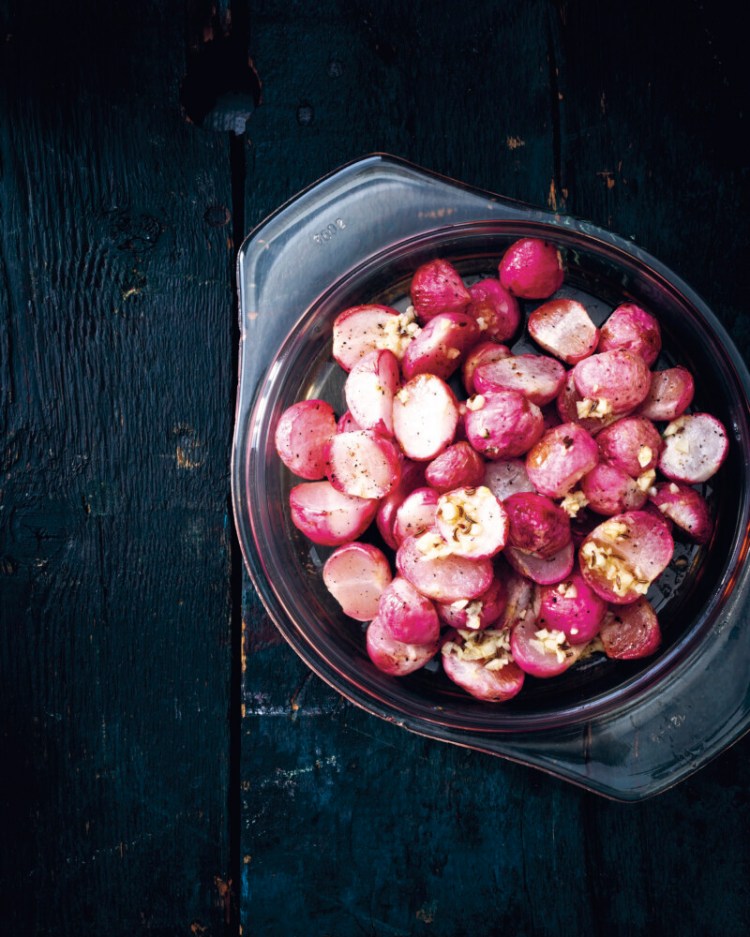As you can see by my byline, my last name is Slavic. Some 125 years ago, my family came from Russia to America and Canada. (Or maybe it was Poland. Or a disputed region between the two. I’ve heard several versions of these fuzzily-known origin stories.) Although any language skills we had quickly vanished, our ancestry made regular appearances on the dinner table when I was a child, in the form of borscht, stuffed cabbage, kasha, cottage cheese pancakes for dinner, and cucumbers bathed in dill and sour cream. Forget meatloaf or mac and cheese. These are my comfort foods.
My repertoire is sadly limited, though; I know this food mostly through a telescoping lens of four generations. I didn’t think to learn my mother’s stuffed cabbage until it was too late — she no longer cooks. And whatever food my ancestors ate has mostly been supplanted by the usual 21st-century American repertoire: chicken thighs, pasta, salmon fillets, hummus.
Enough rambling. What I am trying to say is that I was predisposed by both nature and nurture to like Darra Goldstein’s most recent cookbook, “Beyond the North Wind: Russia in Recipes and Lore.” But I’d have liked it as well if my last name were Jones or Devi or Han.
“Beyond the North Wind” fits squarely in the cookbook-as-travel-guide genre, supported by the terrific photos by Stefan Wettainen, which capture the region’s food, landscape and cooks. Both halves of the subhead (recipes and lore) impress in equal measure.
The recipes, featuring lots of grains, fermentation, earthy flavors and a home cook orientation, excite me. I have never fermented beets to make Beet Kvass, nor have I used kvass as the base of my summer borscht; I plan to do both when the weather warms. I’m intrigued by the unusual honey cake, in which a stack of four large, thin, cookie-like squares are layered with mounds of whipped sour cream. I intend to try that, too. The Beef Stew with Horseradish calls me; the recipe asks for an entire cup (!) of fresh, grated horseradish, plus crumbled rye bread, juniper berries, dill and homemade mustard.
That’s just to name three. The recipes I have made so far barely scratch the surface of my personal “Beyond the North Wind” to-cook list. Oven-Braised Veal with (sour) Cherries was tender with a pleasant tang. On a cold winter morning, Buckwheat Porridge filled my belly and soothed my soul. (And in how many cookbooks does porridge get a star turn? It gets about a half-dozen recipes here.) Roasted Radishes with Garlic and Caraway were robust, fast to make, and delicious. I found the rye dough for the Scallion Pie tricky to work with, or rather sticky, but that was likely user error — I feared I’d toughen the dough if I added too much flour. With practice, I think I could master it. The pie, like many of the recipes here, did not stint on sour cream or butter.
Goldstein has spent almost 50 years straddling the worlds of food and academia, writing cookbooks, consulting for restaurants and teaching Russian language and literature at Williams College. Given her credentials, it’s no surprise the “lore” part of “Beyond the North Wind” is a delight. In a chapter on blini, she quotes a Chekhov description of them as “plump as the shoulders of a merchant’s daughter.” Elsewhere, she tells readers about a 19th-century aristocrat/gourmand who raised his turkeys on truffles, and an annual honey festival during which “honey is collected from the hives and brought to the church for a blessing.” And a Russian saying that Goldstein cites makes me, a food writer and pie lover, deeply regret that my family surrendered the language a century ago: “The beauty of a houses lies not in its walls, but in its pies.”
Oops! We could not locate your form.
Roasted Radishes with Garlic and Caraway
Recipe from “Beyond the North Wind: Russia in Recipes and Lore.”
Serves 4 to 6
1 pound large red radishes (about 24)
1 tablespoon sunflower oil
1/2 teaspoon salt
Freshly ground black pepper
2 tablespoons unsalted butter
1 large garlic clove, minced
1/2 teaspoon caraway seed
Preheat the oven to 450 degrees F. Trim the tops and tails of the radishes, then cut them in half vertically. Place them in a 10-inch cast-iron skillet and toss with the oil, salt and pepper to taste. Roast for 20 minutes, until a knife pierces them easily.
While the radishes are roasting, melt the butter in a small skillet over low heat. Stir in the garlic and caraway and cook, stirring, for about 3 minutes, just until the garlic turns golden. Be careful not to let it burn.
Pour the butter over the roasted radishes and transfer them to a serving bowl. Serve hot.
Send questions/comments to the editors.




Comments are no longer available on this story